French evolution: MoMu considers Martin Margiela's subversive years at Hermès
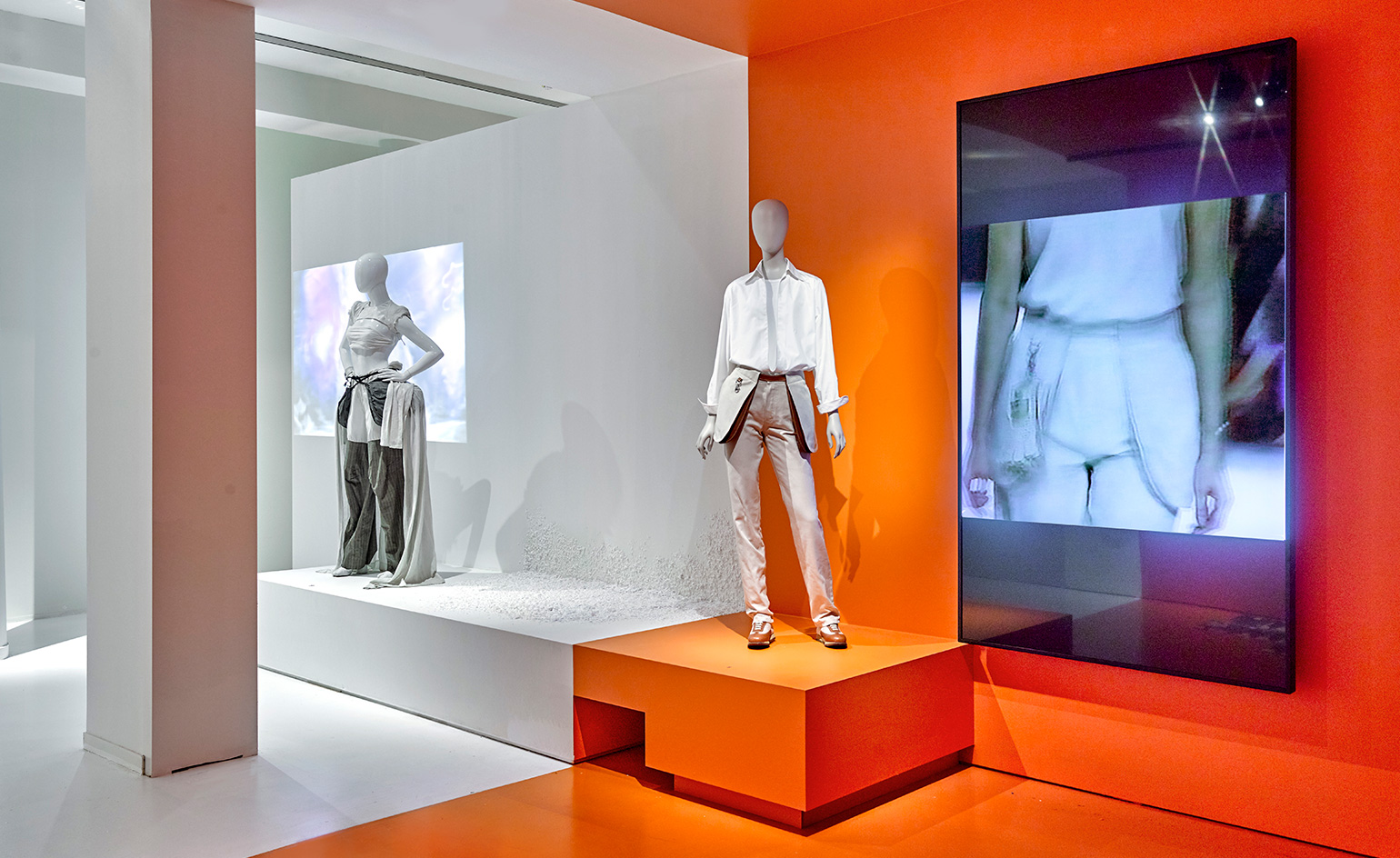
A new exhibition at Antwerp’s MoMu fashion museum focuses on the synthesis Martin Margiela reached between concept and commerce in his collections for the French luxury house Hermès.
Less widely known and visually referenced, this pre-digital period in Margiela’s career is often overlooked or deemed less radical than the avant-garde designer’s own eponymous collections. Even MoMu’s own Margiela retrospective in 2008 skirted the Belgian designer’s Hermès stint. But for Kaat Debo, the director of MoMu and curator of the exhibition, now was the time for the museum to, ‘give fashion, which has a very short-term memory, its memory back’.
With the approval of Martin Margiela – who styled each mannequin himself – and the abundant archive that Pierre-Alexis Dumas, artistic director of Hermès, opened up for Debo to delve into, the exhibition is an incredibly insightful elucidation of the consistency in Margiela’s work – as well as the echoes that resound from his maison to the one he was given creative carte blanche for from Jean-Louis Dumas, then Hermès' CEO.
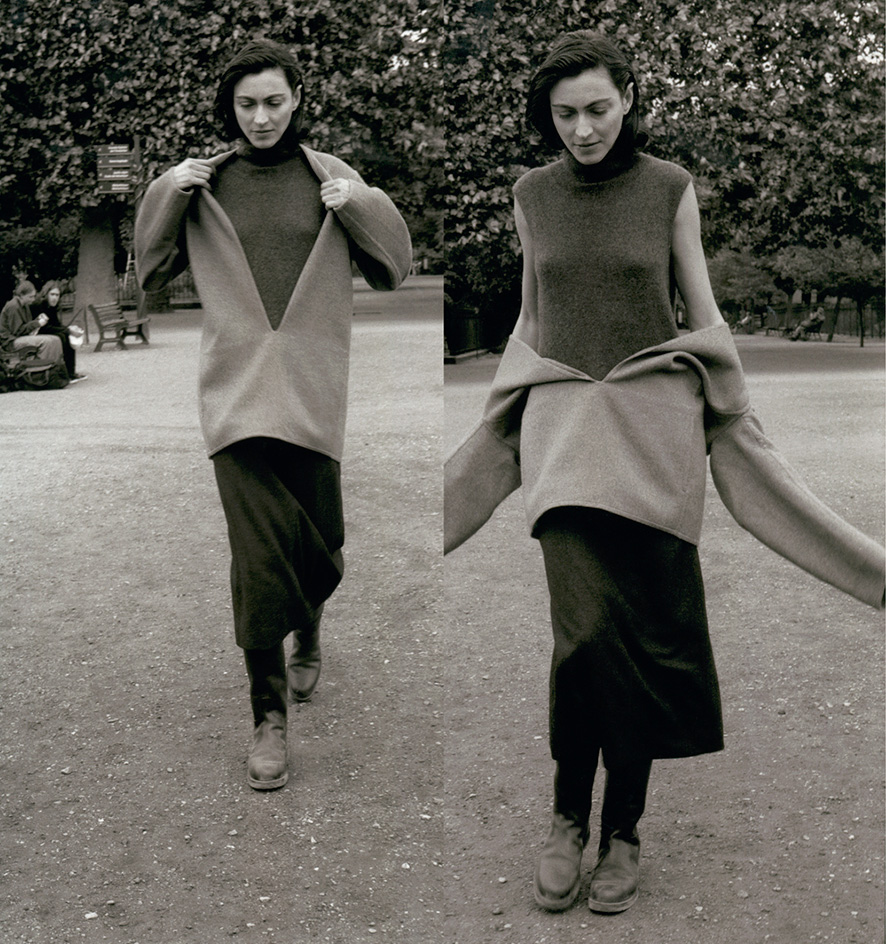
Martin Margiela’s ’Vareuse’ design for Hermès features a neckline with a deep V to prevent its wearer from damaging their hairstyle or make-up
‘The vision with which Margiela entered the world of Hermès, together with the trust and respect between him and my father, helped Hermès enter the 21st century,’ says Pierre-Alexis Dumas. ‘Margiela understood that there is no creativity without history.’
Scenography by Bob Verhelst and Thomas Van Looij evokes the thought processes Margiela developed, by placing his Maison Margiela silhouettes against white walls, shoulder to shoulder with his Hermès designs, presented against orange backdrops. ‘The avant-garde approach and the luxury approach were not separate for Martin,’ stresses Debo. ‘They were two translations of the same DNA.’
Margiela’s deep respect for women drove him to put comfort first. He observed the way women clutched their coats, for example, and designed garments with attention to how they function within a daily wardrobe. This is evinced in 'Le porte vêtement’, a coat that could be carried like a picnic blanket using leather straps.
A number of his innovative designs for Hermès – revolving around this philosophy – are shown. For instance, the 'Vareuse' is a deceptively simple but ingeniously made deep V-neck top without darts, that allows a woman to take of her sweater without messing up her hair – she can just slide it off her shoulders and tie the sleeves around her waist.
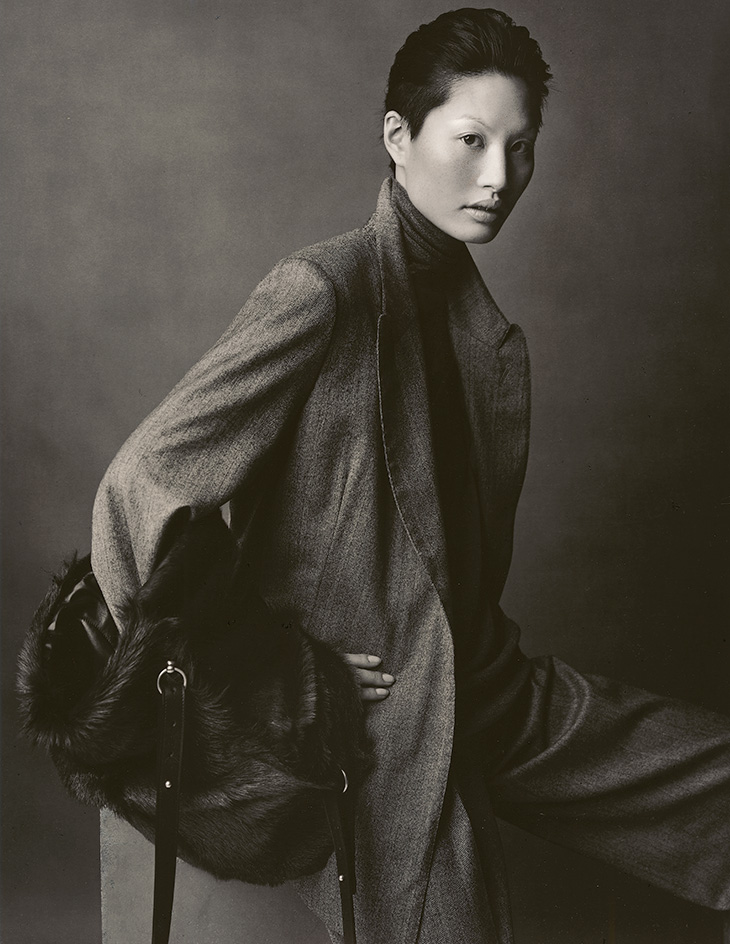
The exhibition highlights the creative compatibility between subversive and commercial design
A specifically developed black fabric that repels water and doesn’t crease is used for an 'anti-pluie' – an outer garment that protects the coat or jacket underneath in a supremely insouciant yet elegant way; while the comfortable knitwear Margiela developed for Hermès quite literally fits like a glove. The technique used was taken from the way a glove is knitted, rounded and seamless.
'Margiela: The Hermès Years' clearly shows, through juxtaposing the subtly tonal Hermès designs with the structured and conceptual Maison Margiela pieces, the surprising compatibility of what at first sight look like irreconcilable differences: the tenets of extreme avant-garde and luxury fashion. Today, those two worlds have merged, and distinctive visions are rewarded commercially. The genius of Margiela is exactly this: both his creative vision and his business acumen, originally radical, have made individualism mainstream.
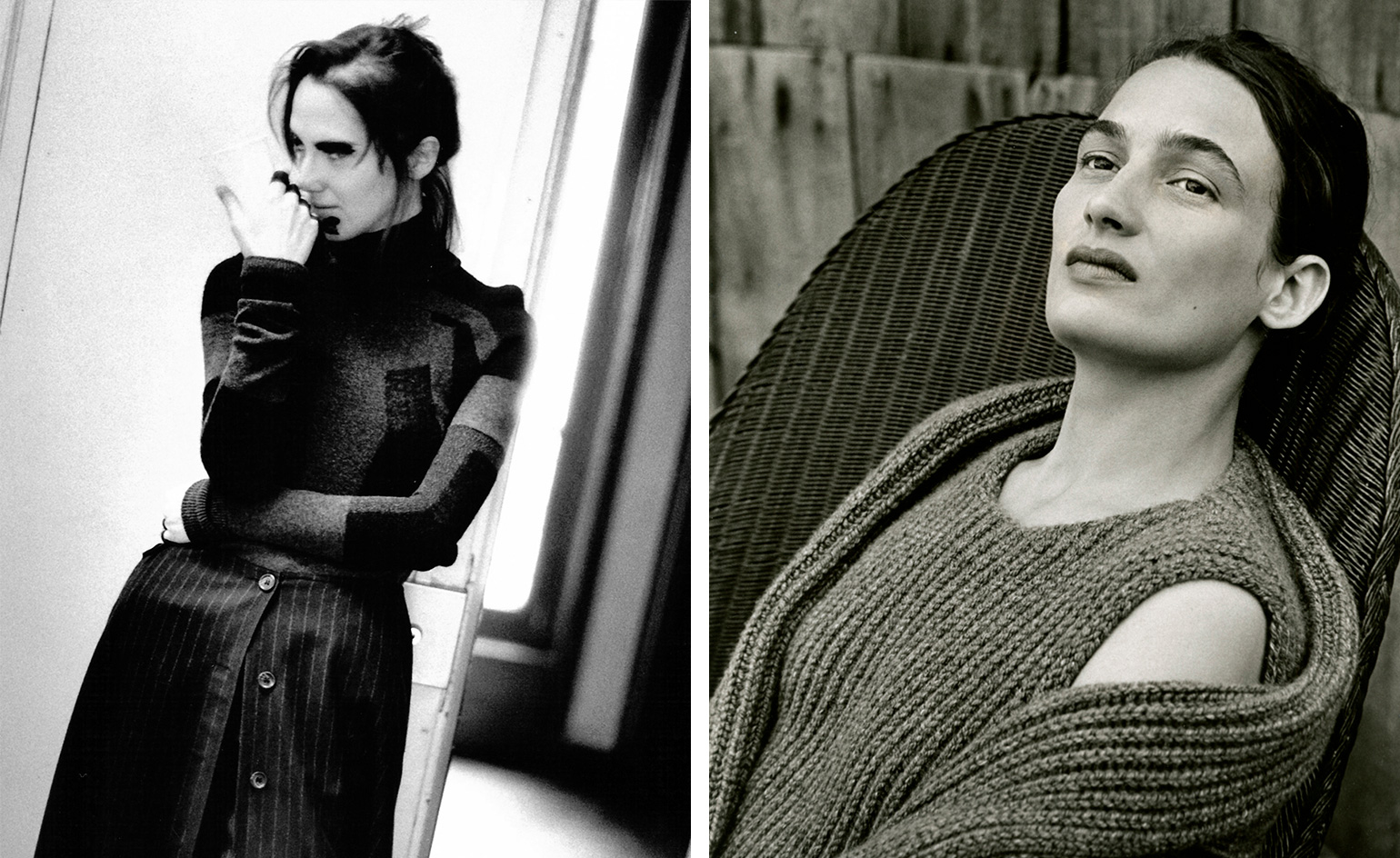
Left, Maison Martin Margiela A/W 1991–1992, Photography: Marina Faust. Right, Hermès A/W 1999–2000 shawl collar cardigan and sleeveless tunic pullover in cashmere, 'Portraits de femme en Hermès', Le Monde d’Hermès, Model: Marie-Anne Van der Plaetsen.
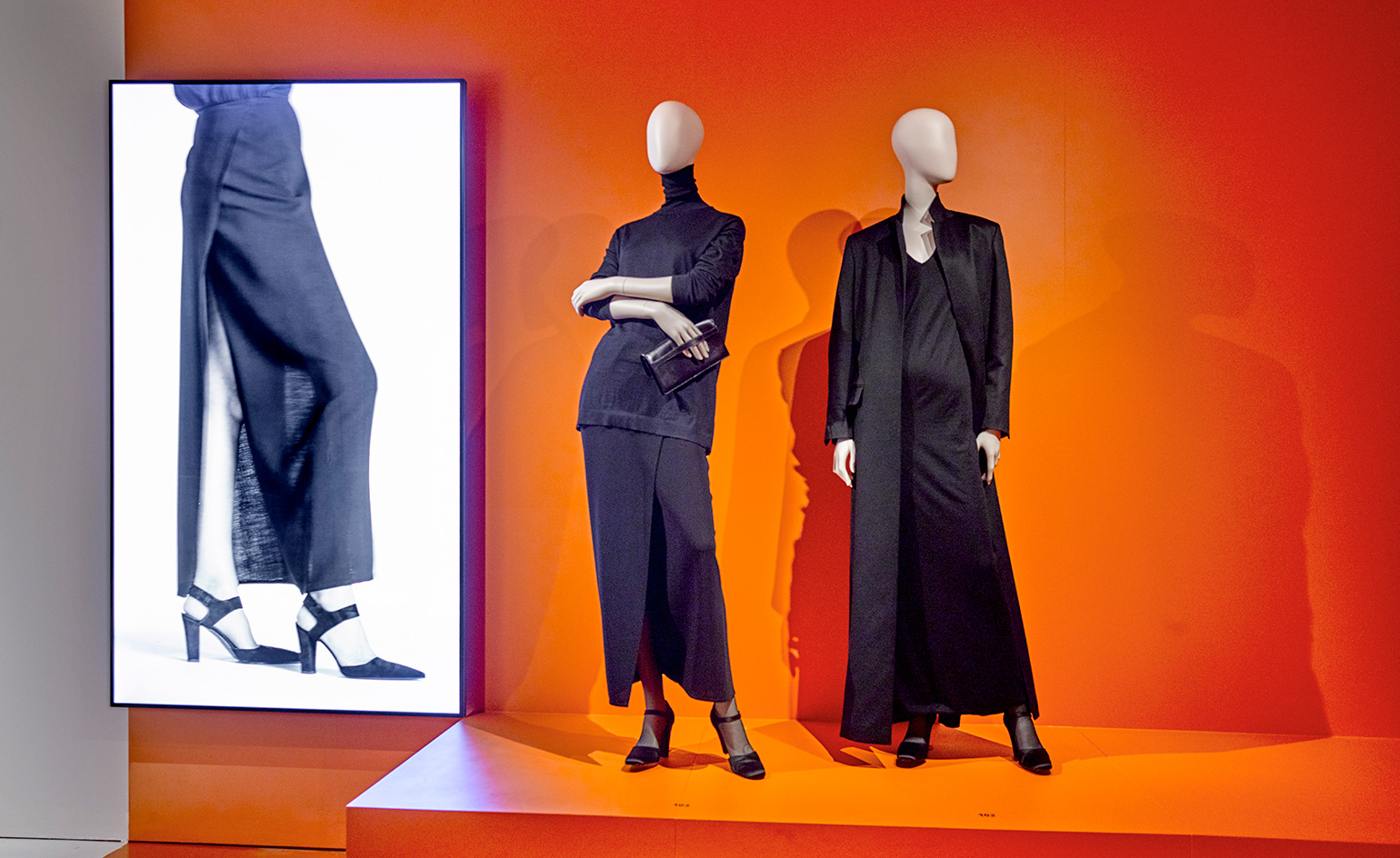
Scenography by Bob Verhelst and Thomas Van Looij evokes the thought processes Margiela developed, by placing his Maison Margiela silhouettes against white walls, shoulder to shoulder with his Hermès designs, presented against orange backdrops.
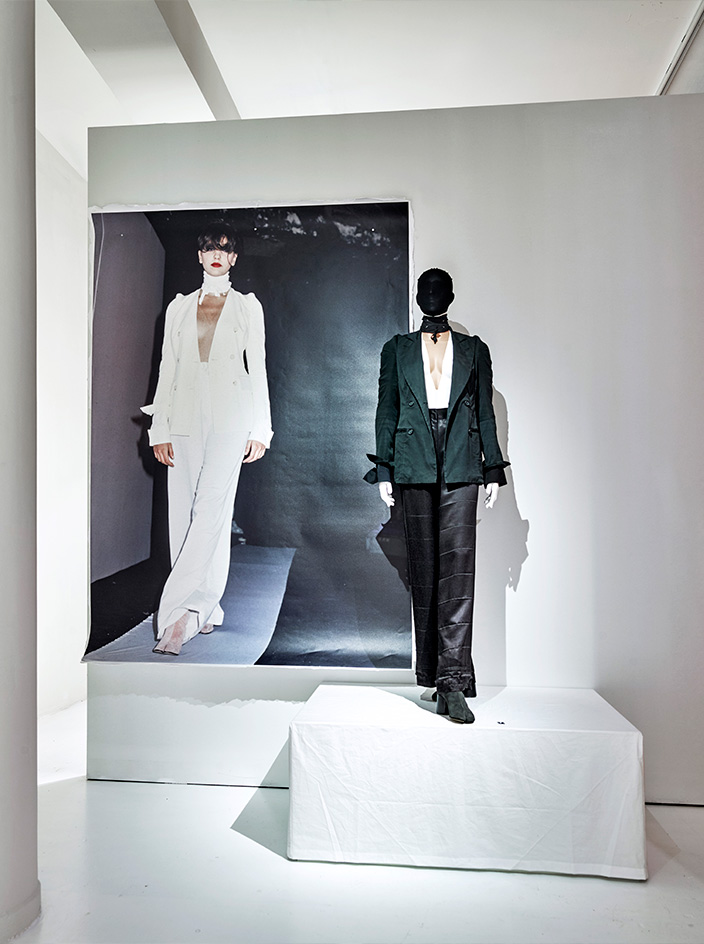
The exhibition emphasises the functionality of Margiela’s designs, including a specially developed black fabric that repels water and doesn’t crease
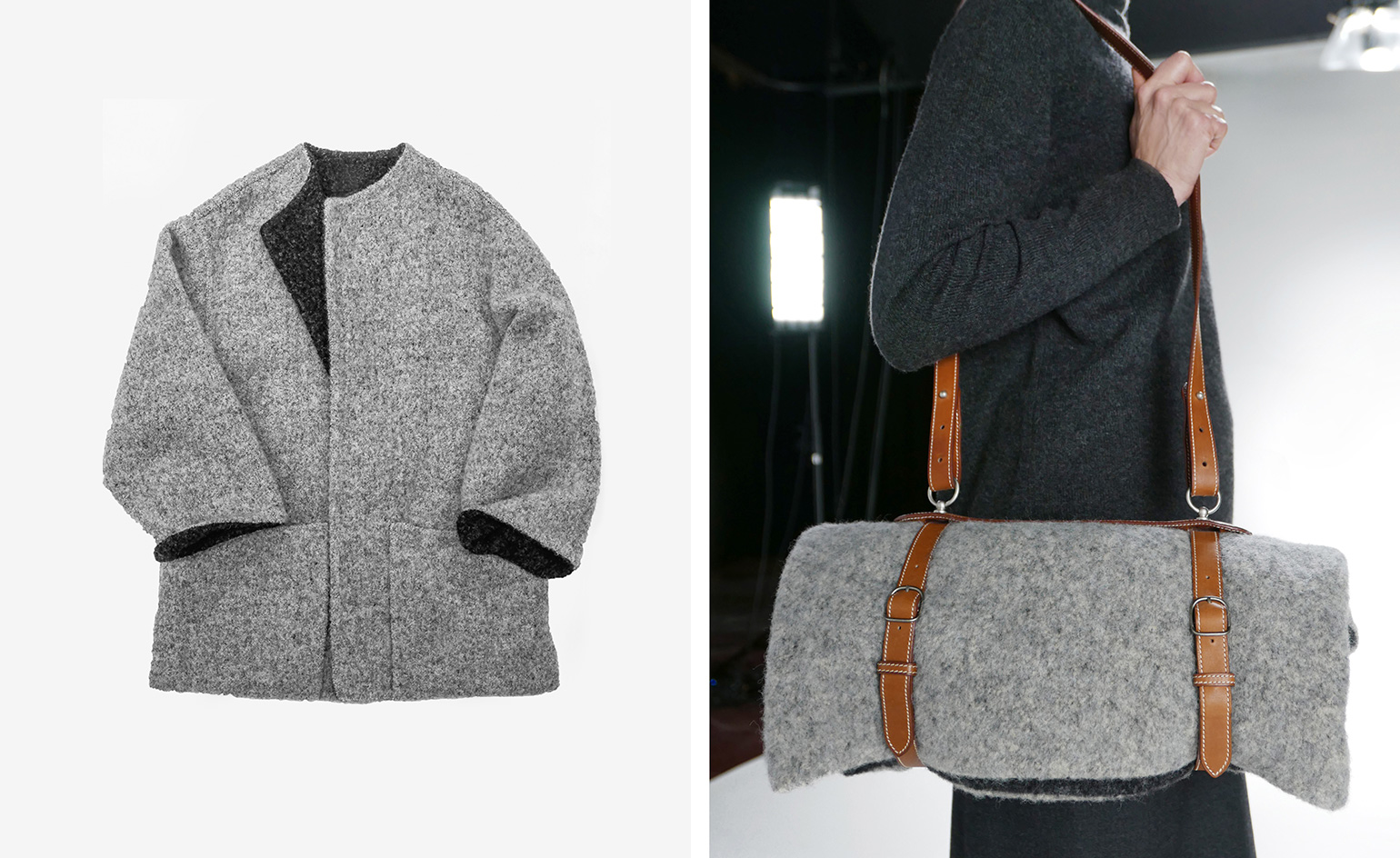
Hermès, L/Z 2000 ‘Le porte vêtement’.
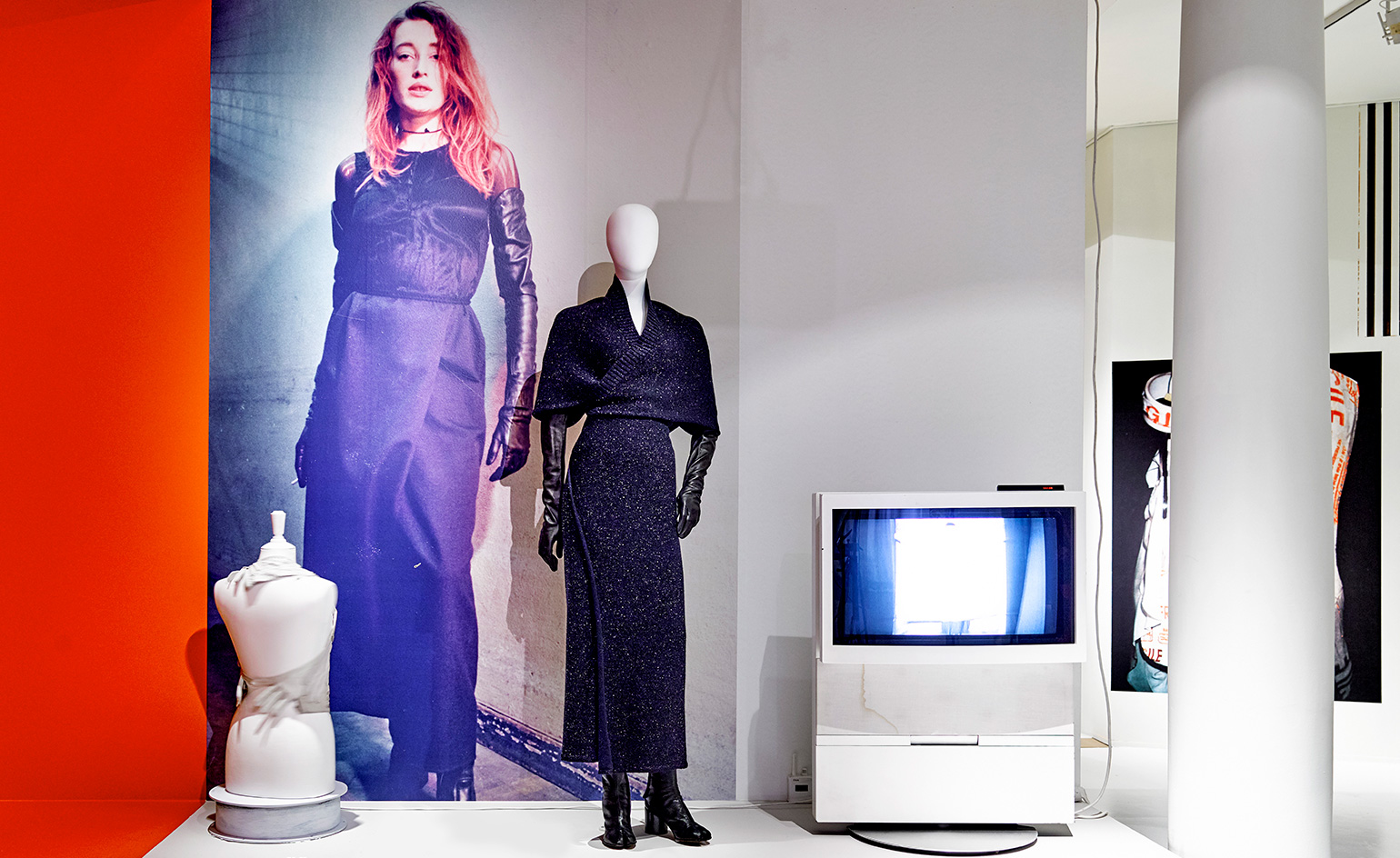
Margiela styled each of the mannequins in the exhibition himself.
INFORMATION
‘Margiela, the Hermès years’ is on view until 28 August. For more information, visit the MoMu website
Wallpaper* Newsletter
Receive our daily digest of inspiration, escapism and design stories from around the world direct to your inbox.
Siska Lyssens has contributed to Wallpaper* since 2014, covering design in all its forms – from interiors to architecture and fashion. Now living in the U.S. after spending almost a decade in London, the Belgian journalist puts her creative branding cap on for various clients when not contributing to Wallpaper* or T Magazine.
-
 Japan in Milan! See the highlights of Japanese design at Milan Design Week 2025
Japan in Milan! See the highlights of Japanese design at Milan Design Week 2025At Milan Design Week 2025 Japanese craftsmanship was a front runner with an array of projects in the spotlight. Here are some of our highlights
By Danielle Demetriou
-
 Tour the best contemporary tea houses around the world
Tour the best contemporary tea houses around the worldCelebrate the world’s most unique tea houses, from Melbourne to Stockholm, with a new book by Wallpaper’s Léa Teuscher
By Léa Teuscher
-
 ‘Humour is foundational’: artist Ella Kruglyanskaya on painting as a ‘highly questionable’ pursuit
‘Humour is foundational’: artist Ella Kruglyanskaya on painting as a ‘highly questionable’ pursuitElla Kruglyanskaya’s exhibition, ‘Shadows’ at Thomas Dane Gallery, is the first in a series of three this year, with openings in Basel and New York to follow
By Hannah Silver
-
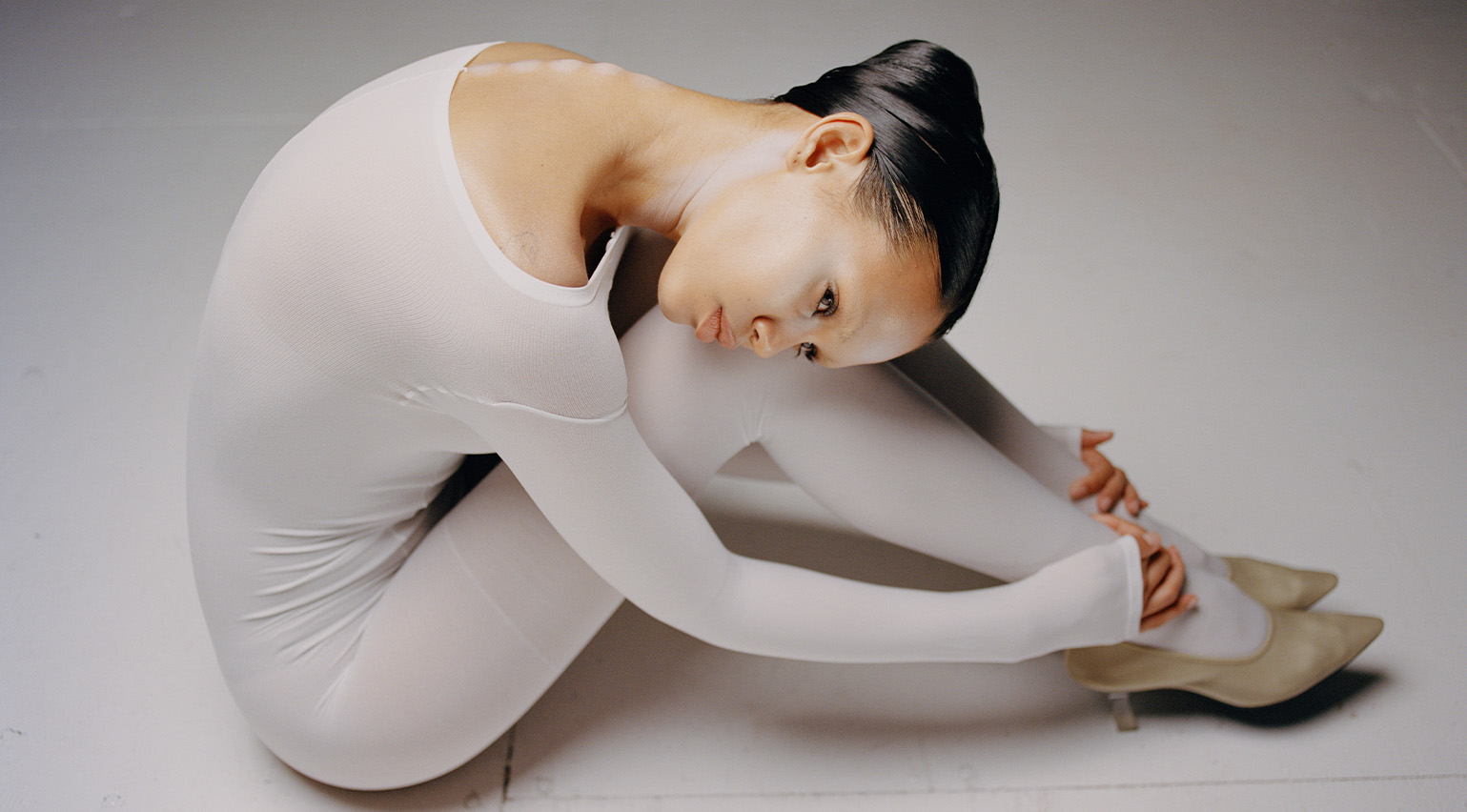 ‘If someone says no, you’re talking to the wrong person’: how make-up artist Marcelo Gutierrez created his own universe in New York
‘If someone says no, you’re talking to the wrong person’: how make-up artist Marcelo Gutierrez created his own universe in New YorkFresh from publishing his first book ‘Nothing Precious’, Marcelo Gutierrez speaks with Mary Cleary about his friends, collaborators and making it as a young creative in New York City
By Mary Cleary
-
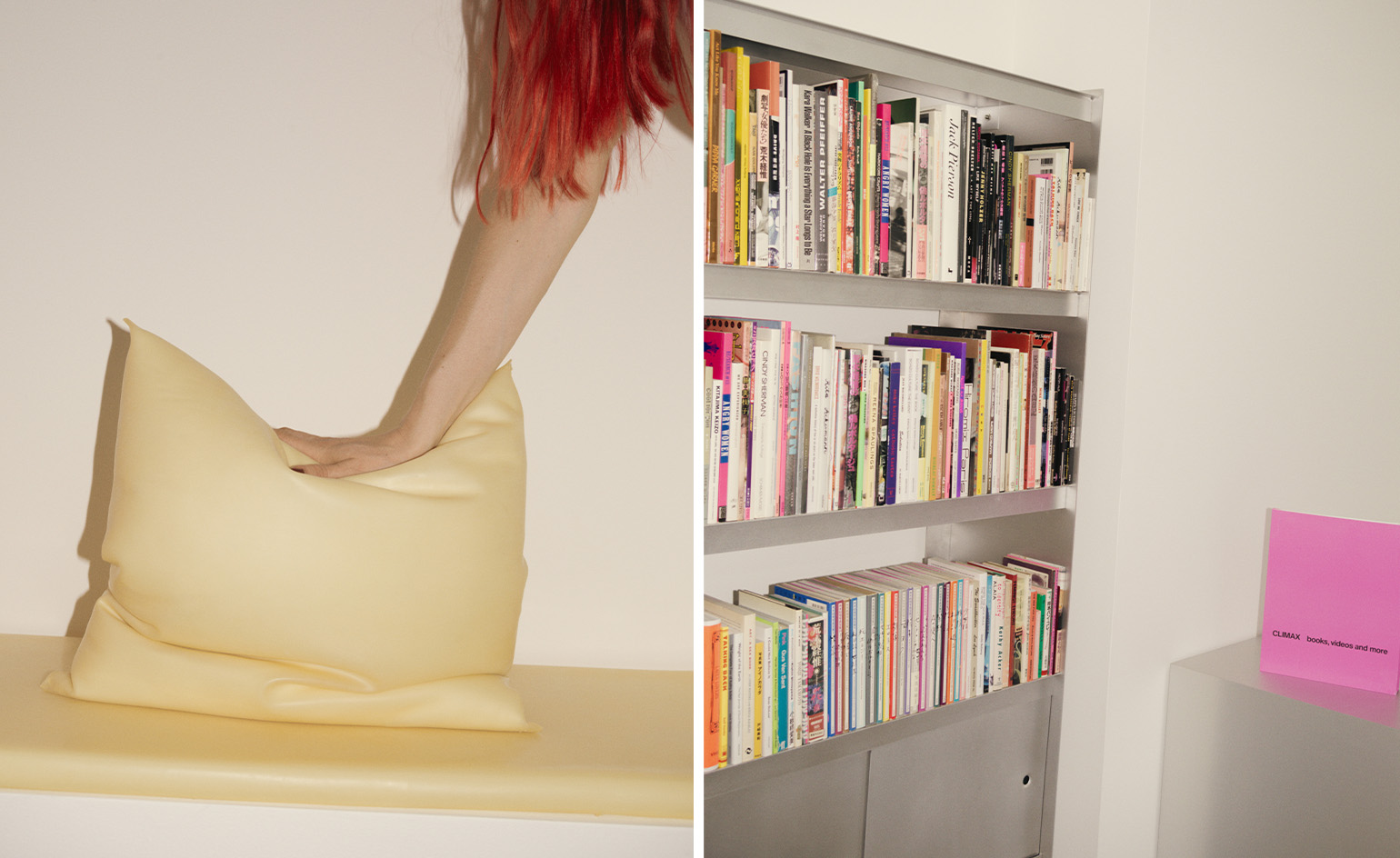 Fashion’s favourite bookstore, Climax, opens a ‘sexy, angry’ New York outpost
Fashion’s favourite bookstore, Climax, opens a ‘sexy, angry’ New York outpostWallpaper* catches up with Isabella Burley, founder of Climax, as she inaugurates a New York outpost of the cult bookstore and showcases a playful new collaboration with fashion label Chopova Lowena
By Mary Cleary
-
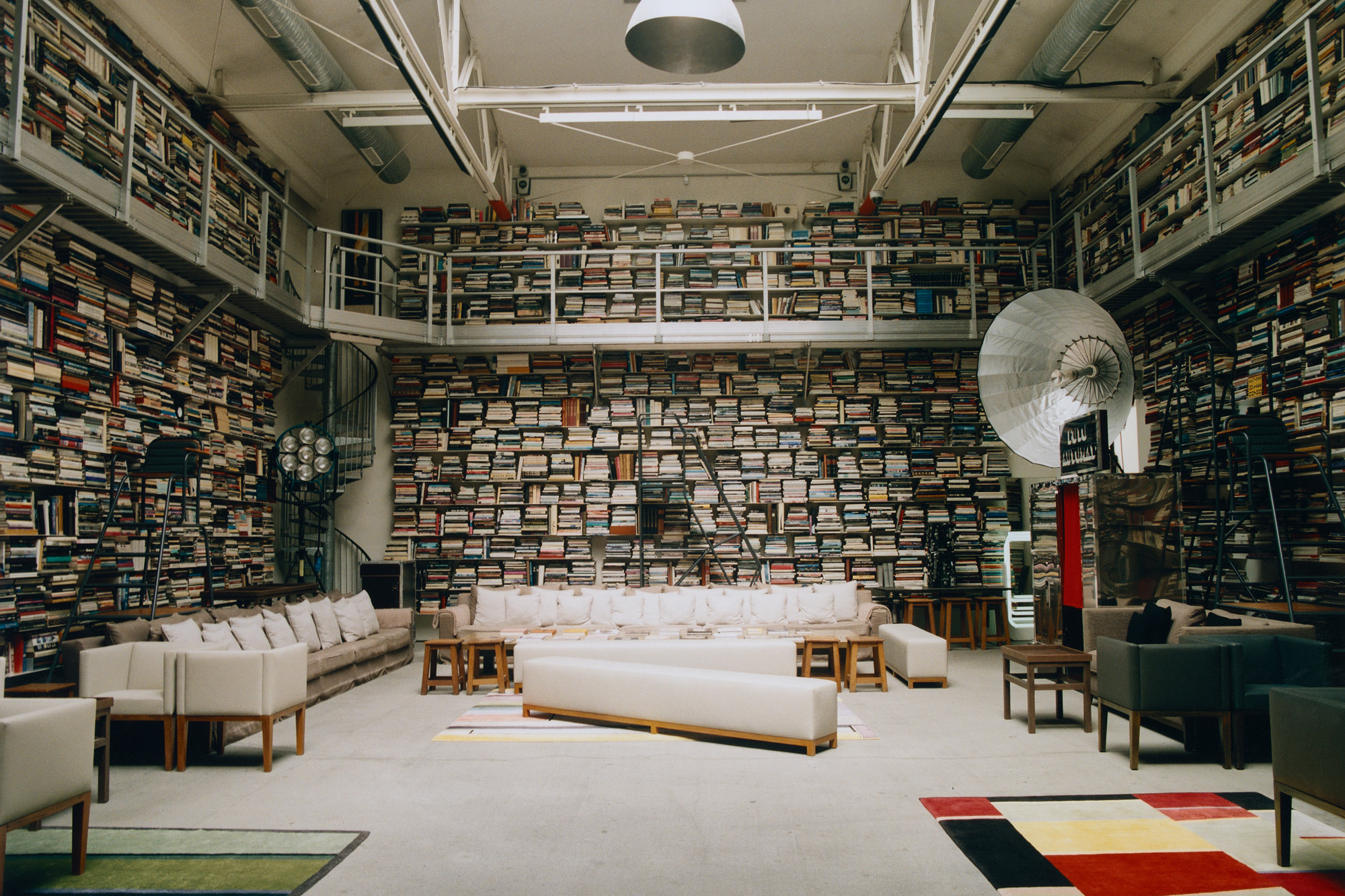 Inside Karl Lagerfeld’s extraordinary Paris library and bookshop, a haven for the bibliophile
Inside Karl Lagerfeld’s extraordinary Paris library and bookshop, a haven for the bibliophileWe take an exclusive tour of Karl Lagerfeld’s Paris bookshop and library 7L, which is keeping the legendary fashion designer’s vision alive with a scintillating programme of cultural events
By Dal Chodha
-
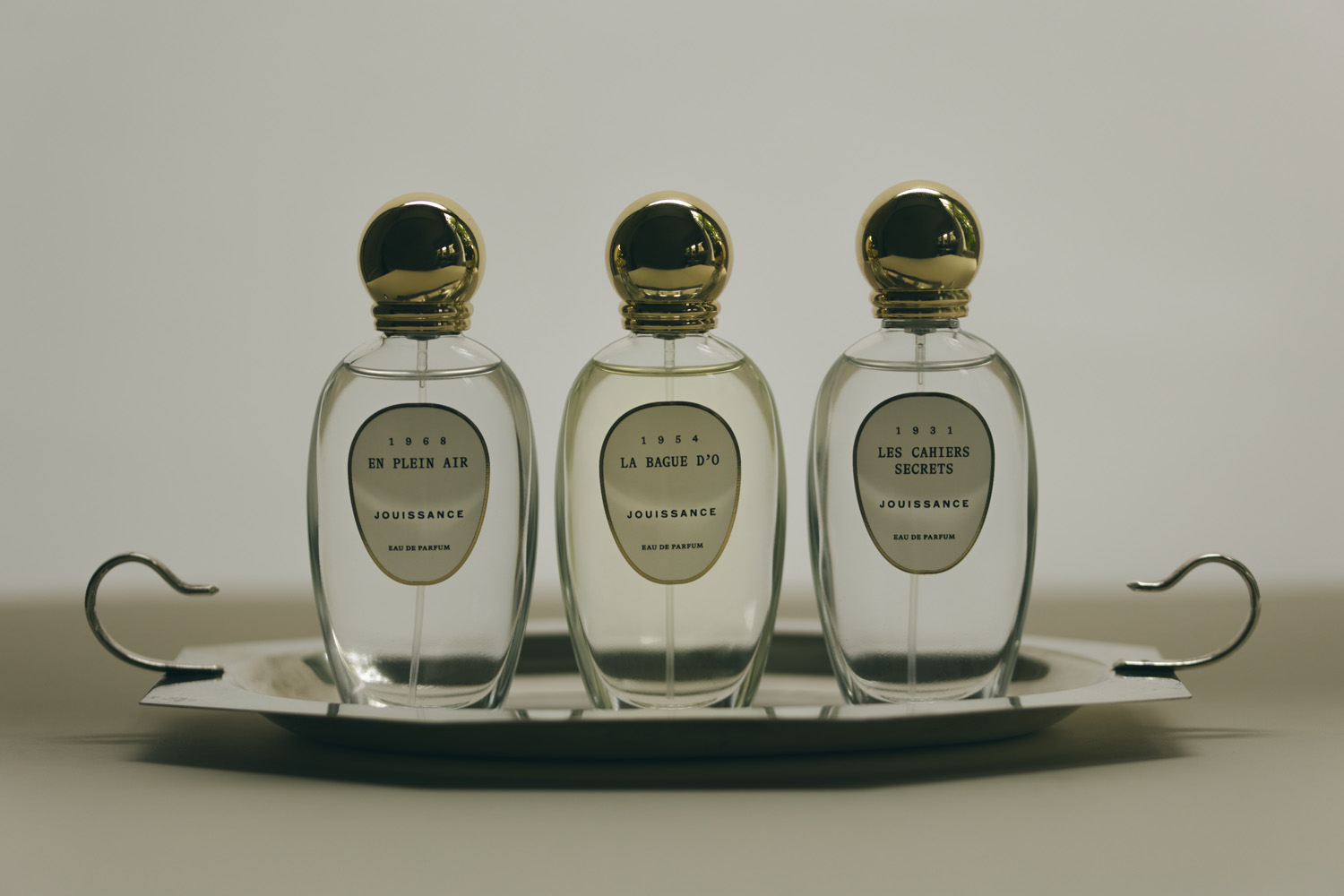 Jouissance: the perfume brand turning erotic French literature into subversive scents
Jouissance: the perfume brand turning erotic French literature into subversive scentsJouissance has interpreted the literature of Anaïs Nin, Anne Desclos and Catherine Millet into perfume, brand founder Cherry Cheng tells Wallpaper*
By Hannah Tindle
-
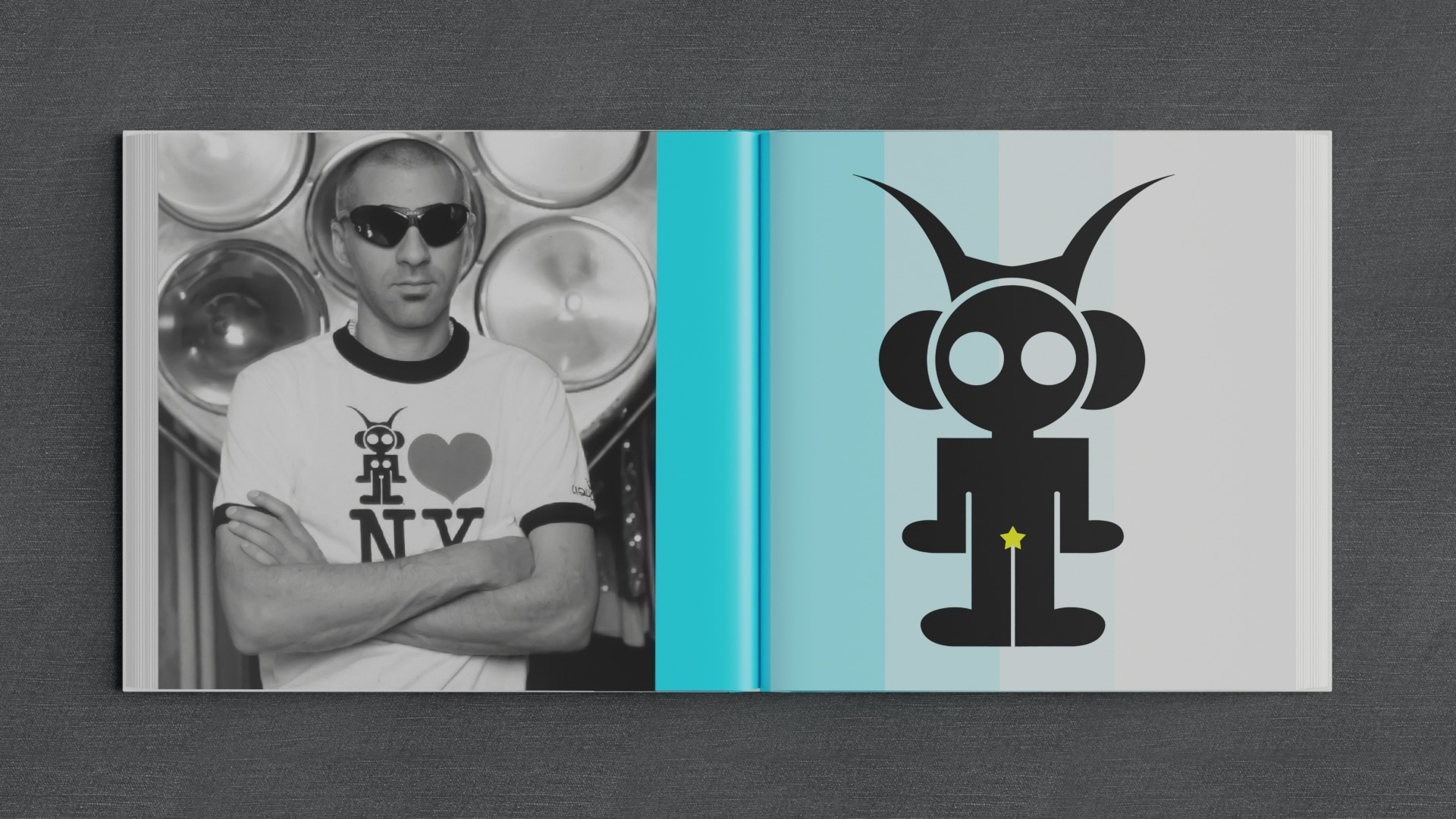 Remembering Liquid Sky, the cult 1990s New York fashion store that was ‘also a scene’
Remembering Liquid Sky, the cult 1990s New York fashion store that was ‘also a scene’As a new book is released, Liquid Sky founders Claudia Rey and Carlos Slinger tell Wallpaper’s Mary Cleary about the downtown fashion store that attracted New York’s underground and had Chloë Sevigny as a sales clerk
By Mary Cleary
-
 Guido Palau completely transforms Kaia Gerber’s hair in new book ‘Hidden Identities’
Guido Palau completely transforms Kaia Gerber’s hair in new book ‘Hidden Identities’Guido Palau and Kaia Gerber have collaborated on a book project, Hidden Identities, which sees the model sport a plethora of different wigs in technicolour shades
By Orla Brennan
-
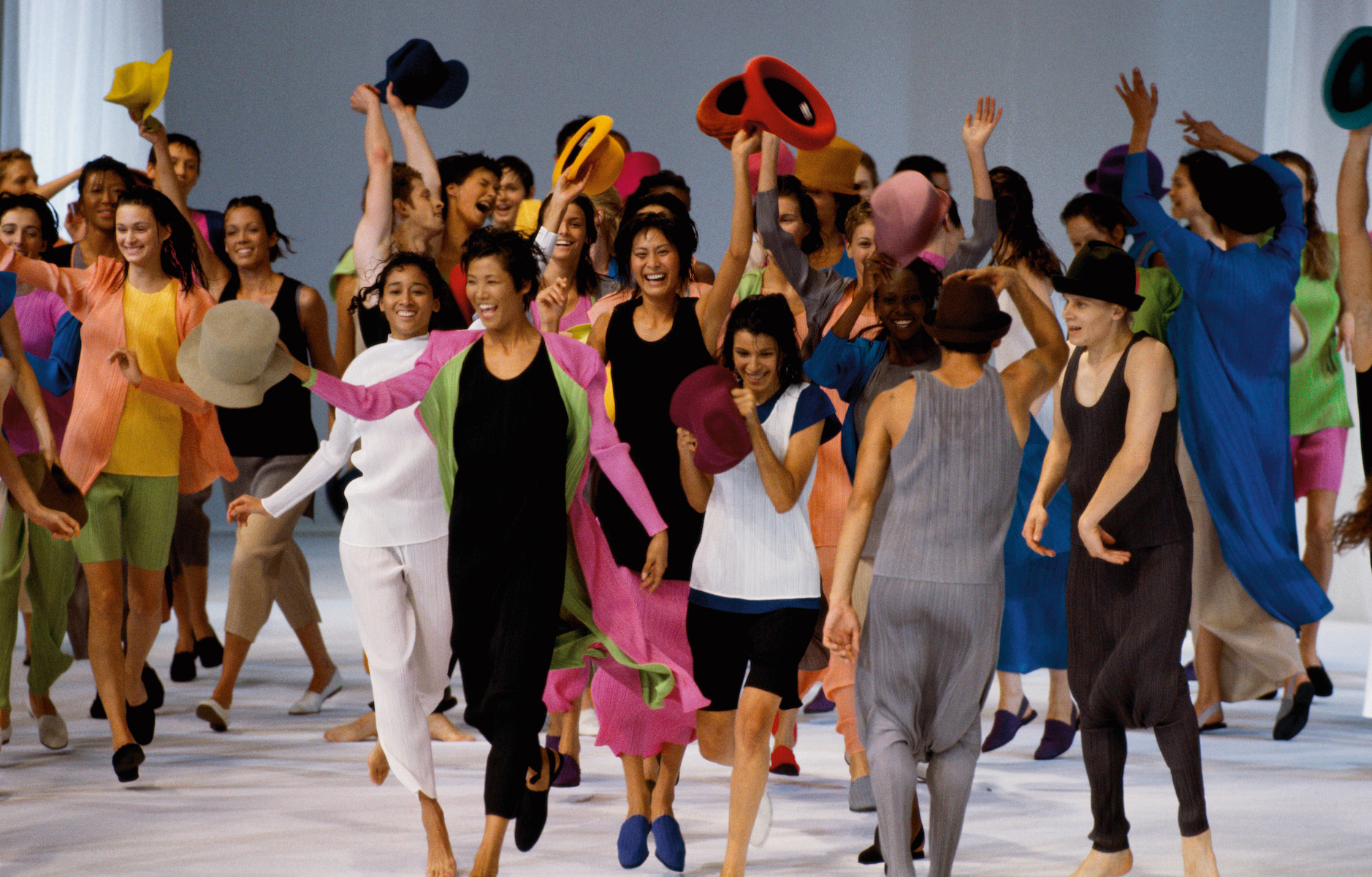 ’Issey Miyake: 1960 to 2022’ is a definitive guide to the pioneering Japanese designer
’Issey Miyake: 1960 to 2022’ is a definitive guide to the pioneering Japanese designer’Issey Miyake: 1960 to 2022’ is a new Taschen book that provides a comprehensive overview of the pioneering Japanese designer’s ’poetic but pragmatic’ work
By Jack Moss
-
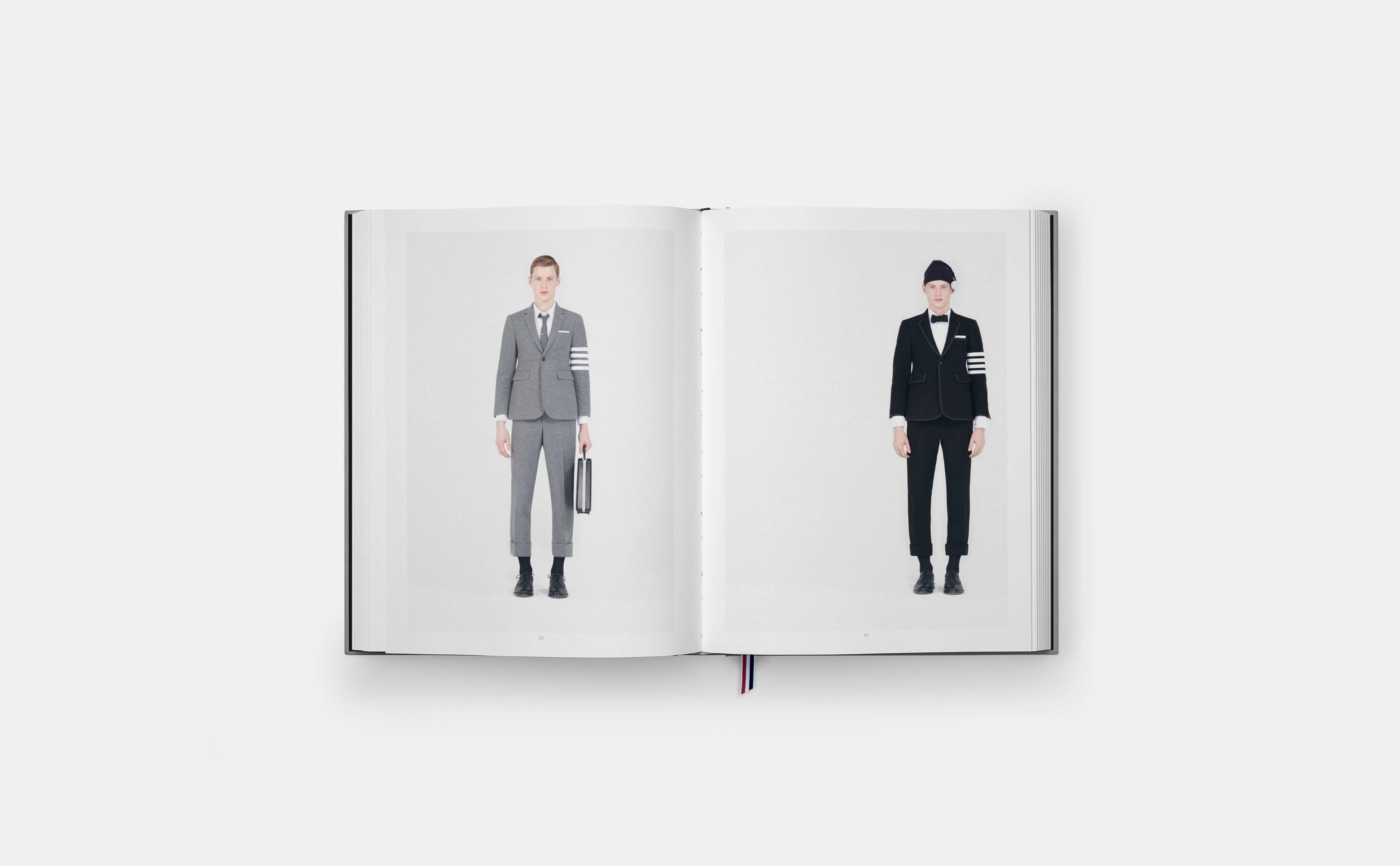 Thom Browne on his 20th-anniversary book, curated by Andrew Bolton
Thom Browne on his 20th-anniversary book, curated by Andrew Bolton‘Thom Browne’ the book, a collaboration with partner Andrew Bolton, charts the American designer’s career. Here, Browne tells Wallpaper* the story behind his first monograph
By Jack Moss